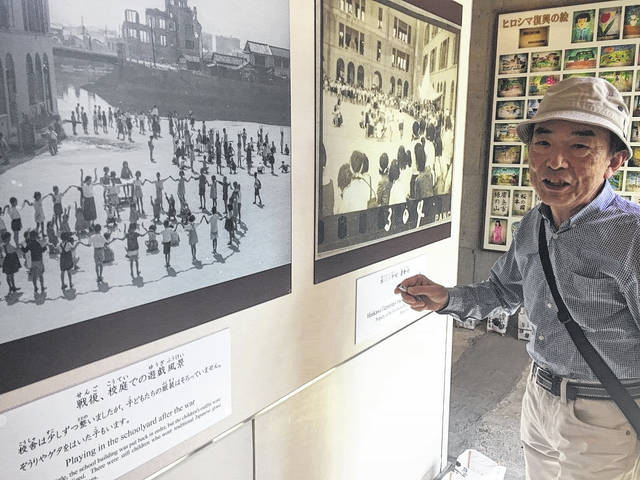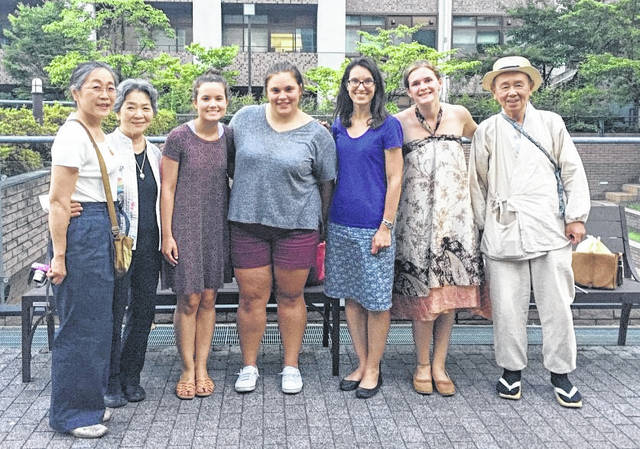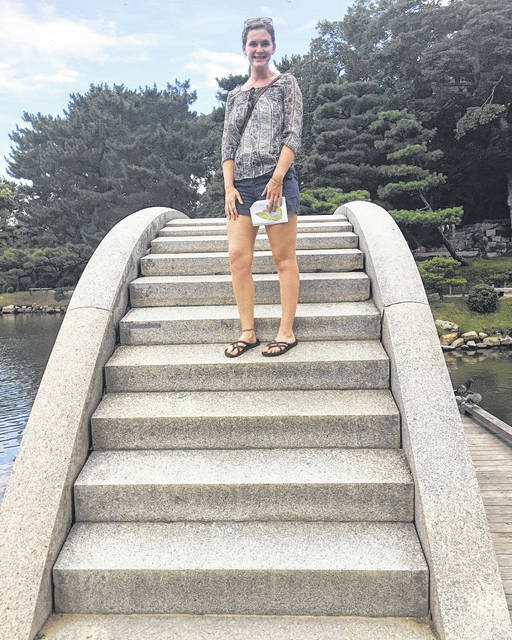




When I was younger, I was taught that atomic bombs were necessary to end WWII, and that we were justified in using them because “Japan started it.”
After traveling nearly 6,830 miles to Hiroshima, Japan to talk with A-bomb survivors, I can say with full confidence that using atomic weapons on any one for any reason is simply an act of injustice to humanity.
Humanity is what I experienced in Hiroshima. Thanks to a generous grant from the Isaac Harvey Fund, the PAX Exchange program, and the Lew Marcuson Fund, I got to meet humans that were so, so different from me, yet so incredibly the same. They woke up during my nighttime, they read right to left, and they drove on the “opposite” side of the road. Even as a somewhat experienced traveler, I was in utter culture shock the entire week I was there … and I loved it.
It was fascinating to hear stories from not only hibakusha (atomic bombing survivors), but from their children and grandchildren. There is such an unmatched commitment to peace in Hiroshima … it’s truly unlike anything I have ever experienced (and I attend a Quaker college!).
Peacemakers in Hiroshima are so committed to peace because they know what it’s like to have their lives, families, and communities devastated by war in ways that I could never fully grasp, even as I ran my hands along melted concrete.
The strange part is that the people of Hiroshima do not live with hatred in their hearts for me, or for Americans. In the words of one of the hibakusha I met, “I do not hate America, I hate war.”
I grew up not far from Wilmington — it’s about a 40-minute drive home. My time in Hiroshima challenged so many aspects of my life and culture that I had simply accepted because “that’s just the way things are.”
My understanding of global issues like peace and justice were increased tenfold. I learned how to ask those difficult questions without knowing the answers … to step out of my comfortable way of thinking and consider what is good for people as a whole, and what is best for humanity.
Travel will do that to you — and that’s why I am so thankful for those who funded my trip and trips like mine. Flights are not cheap, and my prayer is that everyone would be able to view the world from another human’s perspective, regardless of their socioeconomic status.
I give many thanks to the Isaac Harvey Fund, who not only funded this trip, but my stay in Cartagena, Colombia a few years back. I was able to partner with the Obra Moises Foundation to teach English in one of the neighborhoods outside of the city, and I miss the caring, diligent, compassionate people I met there every day.
As my time at Wilmington College is coming to a close (and while I’m trying to figure out what I’m going to do when I graduate with majors in Marketing, Spanish, and Economics), I will carry the people of Japan in my heart. I will continue to tell their stories and continue to think critically about what their experiences mean for the person I’d like to become.
Above all, I hope to put into practice the words of Micah the prophet and seek justice, love mercy, and walk humbly with my God.






